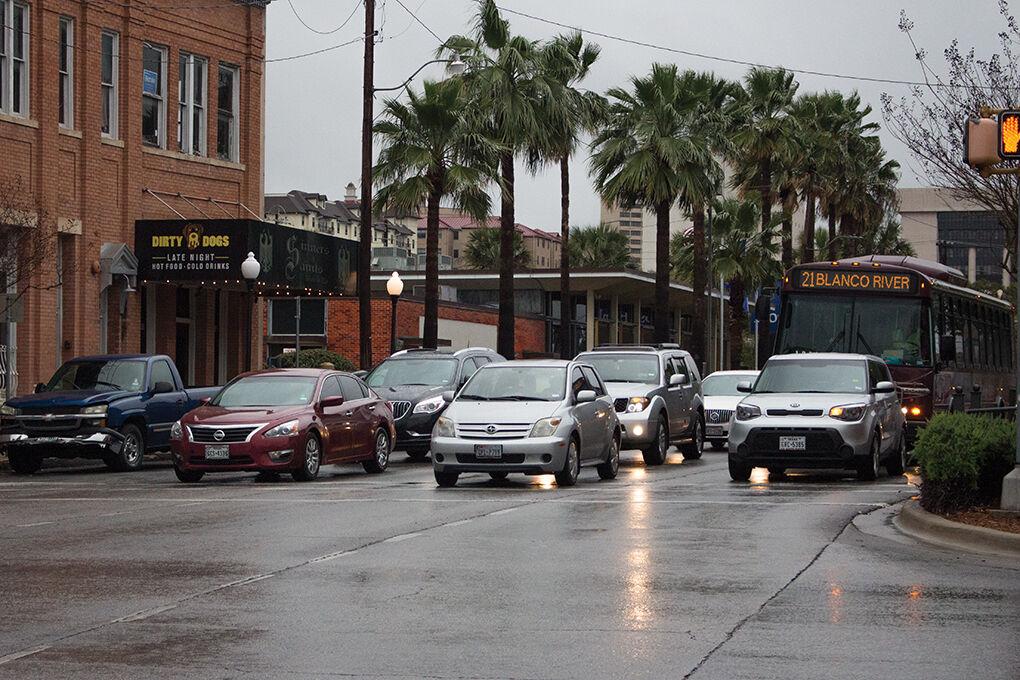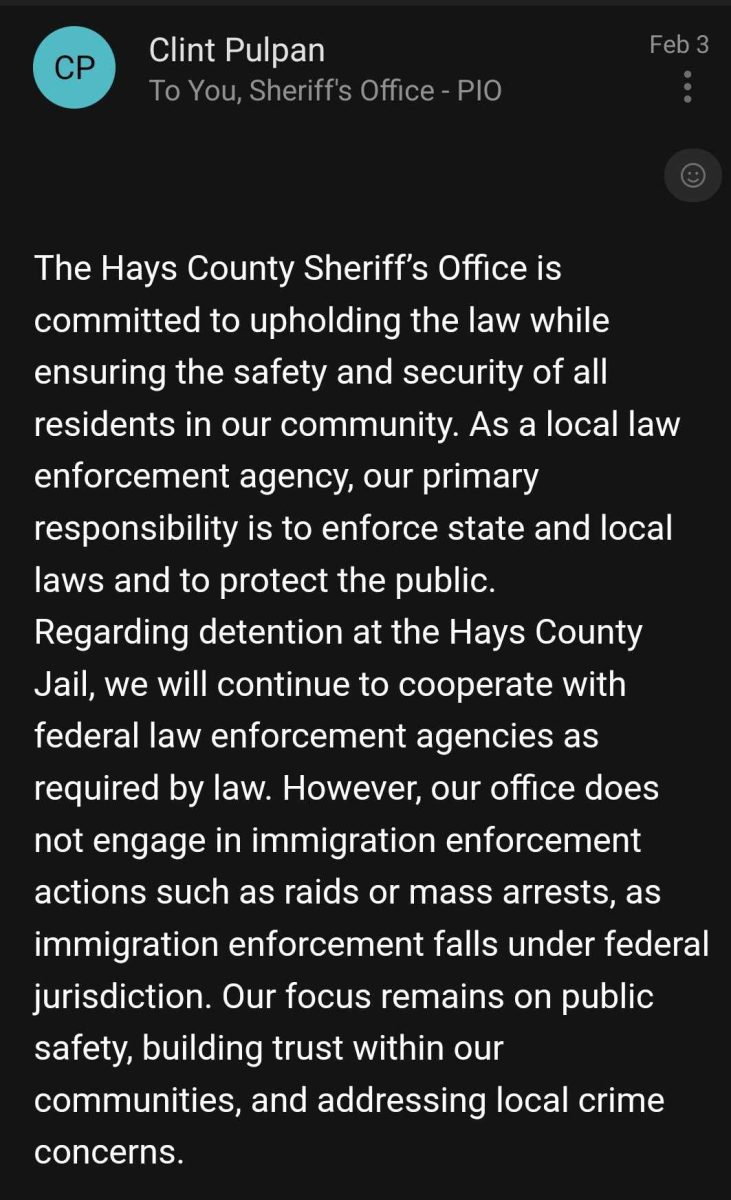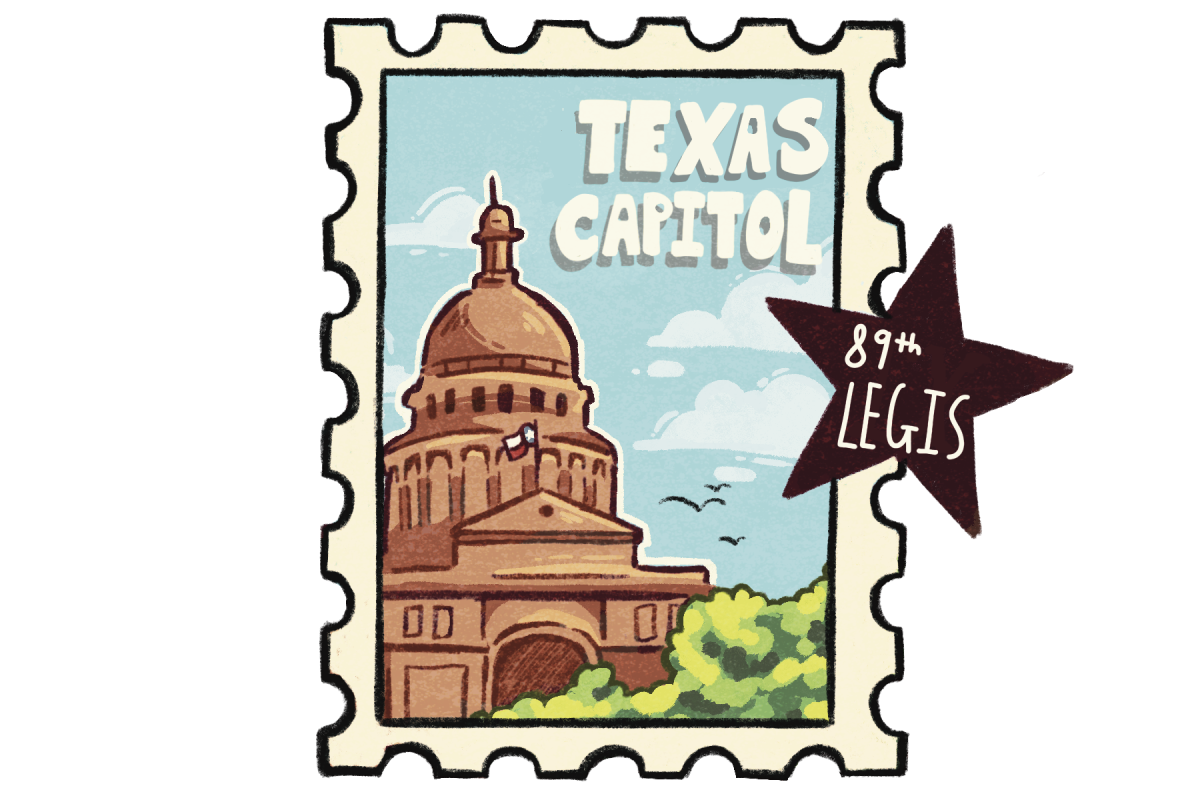Extra bus fees and difficult bus schedules have affected Texas State student in the Austin area since 2012. While all students pay a bus fee each semester, these commuters must pay extra each month to get to class using CARTS.
As the university population grows, commuting students continuously rely more on transportation via the university bus system to get to campus. Up until 2012, commuters in Austin and surrounding areas could use the same university bus system as everyone else.
Steven Herrera, director of transportation services, said that changed when the Texas Transportation Institute, based out of Texas A&M, completed a study showing that universities should focus on local commuters.
“There were a couple of elements looked at: riderships, cost per passenger and safety issues,” Herrera said. “One of the findings was that the local service really should be the priority because that’s where the majority of students are.”
The result was an increase in transportation options for local students as well as a steep spike in price for longer distance commuters. While all students attending Texas State must pay a $95 fee each semester toward the operation of the university busses, these commuters pay an additional $88 dollars each month.
Ashley Lamar, a digital media innovation junior, said the price was too much for her to afford.
“It might not seem like a lot of money, but to a college student that’s a lot,” Lamar said.
While all Texas State students have access to the CARTS busses that make up the city of San Marcos’ public transportation free of charge, the interurban coach is not included. Dana Platt, marketing director for CARTS, said that this was due to the nature of the contracts agreed to by the city and university.
“(Students) get to ride the bus, it’s not for free but it’s included in their tuition, so when they ride the bus around town, locally, they just have to show their ID,” Platt said.
Because the interurban bus routes are designed to service the wider hill country area, the commute to the university is not the only priority for CARTS. This means that the connection times on the routes are not coordinated with Texas State course schedules.
Dana Platt said aligning the two schedules would be impractical.
“We have nine other routes that we make regionally to try to make connections, so it’s not really ideal to check with Texas State classes to make sure they line up,” Platt said. “I’m not sure that we could possibly, as a transportation organization, check with Texas State’s classes to make sure that all of our routes are going to perfectly line up.”
Lamar said these delays often leave her waiting for a bus to arrive near campus.
“I’ll have a class that is from 2 to 3:20 (p.m.),”” Lamar said. “I think the last bus leaves like three. These class times leave an extra 20 minutes, but the next bus doesn’t get there until 5:10.”
The involvement of CARTS in the Austin area is purely the result of supply and demand as it unfolded after the university began focusing on transportation local to San Marcos. Steven Herrera said that the trade-off resulted in benefits that are still felt today.
“There was a service that they felt could be provided by them operating it,” Herrera said. “We were able to put in services to Bobcat Village.“
For the foreseeable future, this situation will remain largely the same, although the bus schedule may be flexible.
“We’re open to tailoring our routes to fit our communities,” Platt said. “ We just came out with these new schedules in January, our next schedule change will be in August, so we’re collecting data and we’re open to suggestions that, next time we make route changes, we can implement.”
Lamar said Texas State should set aside a bus for the area, otherwise, for her and her fellow commuters, transferring to a nearer college may be the only solution.
“It’s just a big necessity I see,” Lamar said. “If they really want more people transferring to Texas State or commuting I think that would be one big thing to do. It’s not just kids that can’t afford to move to San Marcos it’s also people who are blind or can’t drive or have to stay home with family, they can’t live on their own. It’s kinda messed up in a way, I think.”
Categories:
Austin-area commuters stuck with large bus fees
March 22, 2018
0
Donate to The University Star
Your donation will support the student journalists of Texas State University. Your contribution will allow us to purchase equipment and cover our annual website hosting costs.
More to Discover









